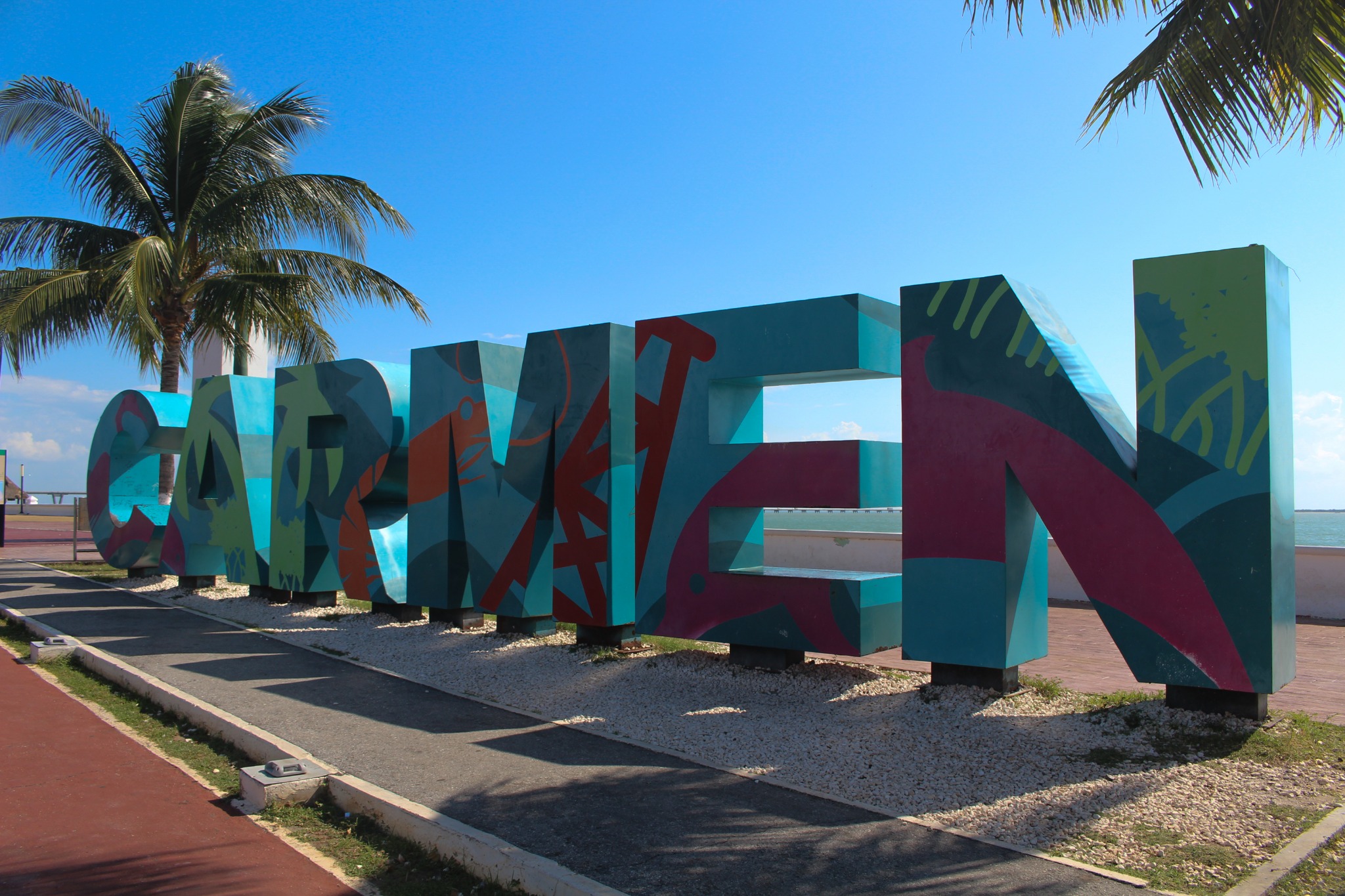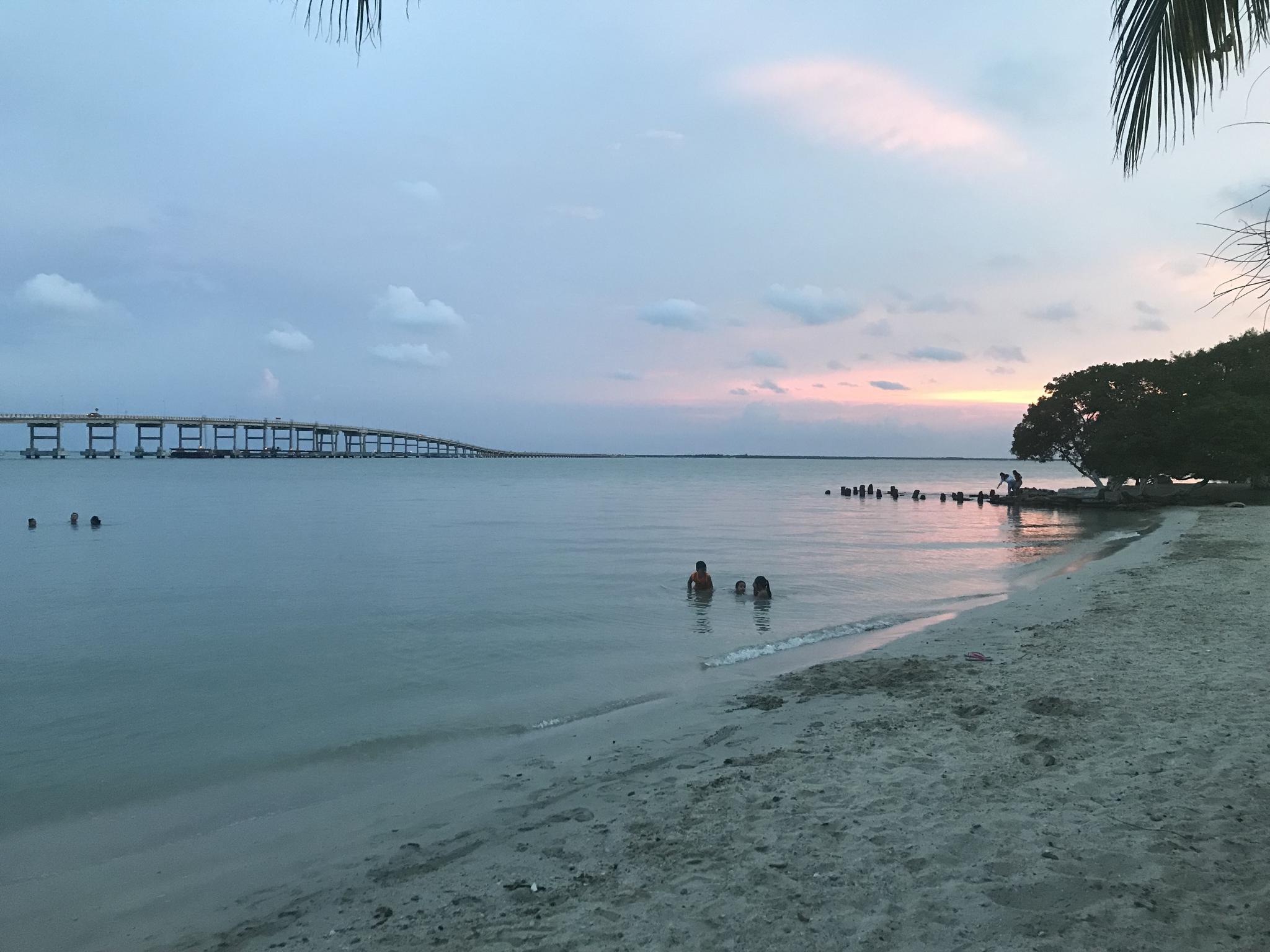First reflections in a new home
Sept. 10, 2019
On the quick flight from Mexico City to Ciudad del Carmen, our tutor, Yazmin, a lifelong Carmen resident — a carmela, as she would be called here — told me and my fellow Fulbright grantee, Julia, that what we would find in Carmen are extremes: the very rich and the very poor. It, like many places in Mexico, is marred by inequality, the sort of inequality that creates what many have called “two Mexicos.”
Carmen is a unique place with a complex history. Surrounded by water and nicknamed the “Pearl of the Gulf,” it’s located in the state of Campeche close to its border with Tabasco. If you traced the Gulf of Mexico from near New Orleans down to Merida, it would form a “C”, and you’d find Carmen right where the bottom of that “C” begins to curl upward.

Carmen is well known for its seafood, and its economy revolved around the fishing industry until the 1970s, when large amounts of petroleum were discovered off its coast. Today, Pemex, Mexico’s state-owned oil company, is the lifeblood of the city. Oil platforms dot the horizons around the city, and men in neon-orange jumpsuits (the uniform for oil workers) dot the streets.
While Pemex remains the center of the city, around which all things revolve, the landscape has been rocky the past few years. A drop in prices, a series of federal reforms, a tightening of budgets and general restructuring have led to lost jobs and closed storefronts in Carmen. People I talk to complain about how bad the traffic used to be. Now, the streets that connect the Carmen’s shores aren’t empty—but they’re far from full.
Carmen’s international airport is small, the kind of airport where you deboard the plane via a staircase, which always makes me feel like a celebrity or a president. When we arrived there at 1 a.m. the Saturday after our week-long orientation in Mexico City, we stepped into air that was heavy with humidity, a warm welcome to the climate we’ll be sweating in for the next 9 months. We walked 20 meters to the baggage claim, a small belt with pieces that fit together like a puzzle. A few bags in, there was a backup on the belt, causing suitcases to fall to the ground in rapid succession. But it was quickly resolved, and soon we were on our way.
It doesn’t take very long to tour Carmen, which is what we did the next day. We saw two malls, two beaches and a boardwalk, where we went to an old cafe, La Fuente, which tells Carmen’s history via a sepia-toned mural. We drank micheladas with a view of the ocean and ate elotes for dinner. We watched the sunset, a beautiful display of orange and pink dipping into the ocean, which reminded me of new beginnings.

The next day, we swam in the ocean, with water was so warm and blue that it reminded me of the fancy hotel pools at home in Phoenix. I have always thought of myself as a mountain girl, but the beach isn’t bad either.
During the week, we got to know the university—and more importantly, the students and teachers that make it run. We were welcomed with open arms and hearts; everyone went out of their way to make us feel comfortable. A teacher gave us her office, the director gave us shirts, the man in charge of the copy center patiently explained procedures when I arrived clueless, and everyone shared their phone numbers, assuring that if we needed anything at all, we should just call.
The university itself is made up of pinkish-buildings, most of them one or two stories. There’s a gym, baseball and soccer fields and a library, and giant iguanas roam the green grass. The gym was built in 1991, according to a plaque hung by its door, and most of the equipment appears to have stayed the same since then. Now, the rusted-over equipment makes it so that when you workout, the sweat on your hands mixes with the rust, painting orange streaks on your body. The gym was intimidating at first, because I don’t know how to use most of the equipment and the EDM music is at times deafening. The first time I went, I walked around for about 90 seconds, disoriented without my glasses, before feeling too overwhelmed and leaving. But I came back the next day, and since then have grown to appreciate the back-to-basics machines and motivating music.
I switch off days between the old gym and running around the school’s track—which is tedious but comfortable, and where it’s safer to zone out to a podcast. The disadvantage of the track is its lack of scenery. My first week in Carmen, I ran from my house to the boardwalk a few kilometers away, and then stopped at a tortillería on my way back, running the final kilometer and a half passing a stack of 20 warm tortillas from hand to hand. The track, on the other hand, provides no such detours.
Safety forms the center of many discussions I’ve had so far in Mexico, understandably so. There are a lot of terrible things that happen here. People have warned me about the worst things that could happen to me in Mexico—it was the subject of an entire workshop at our orientation. Thinking about those things is enough to make anyone want to lock their doors and stay inside. But if someone sat me in a room and told me all the worst things that could happen to me in the U.S.—things that we see happening on the television seemingly every week (El Paso, Dayton, Odessa)—I think I would feel the same way. This is not to minimize the real and horrific impacts of everyday violence in either Mexico or the U.S., but I do think it’s risky when fear obscures perspective, or more devastatingly, connection.
For now, I’m excited to get to know the students and teachers better, to spend more time in the classroom, and to start carving out a routine here in my new home. I’m especially excited for this weekend, which is when Mexico celebrates its independence. The streets near the center are already covered in green, white and red, and I got my nails done to match (I actually got acrylic nails, which the stylist put jewels on. If you know me, you know that is all very un-me—but hey, I’m trying some new personas on for size).
I am thankful for so many things, and even more thankful for so many people. I hope to write again soon.
Mia
